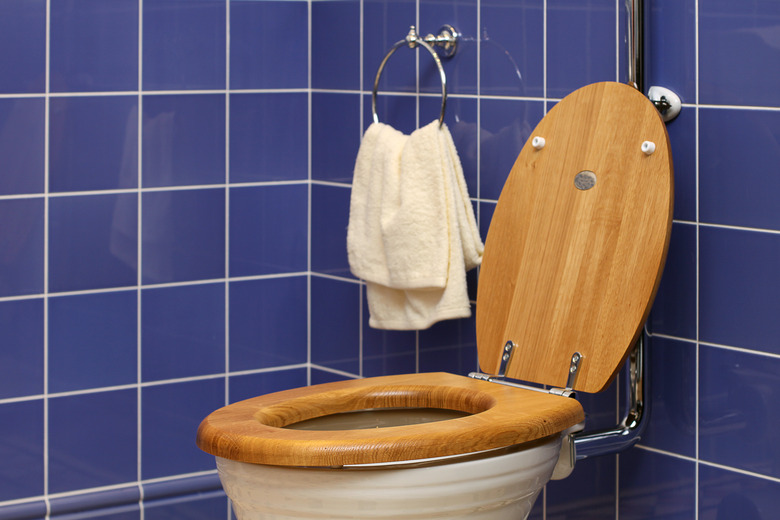Wood Vs. Plastic Toilet Seat: What To Know Before You Buy
We may receive a commission on purchases made from links.
If you're looking to replace your toilet seat, it's likely you'll need to consider which material you want it to be made from. Wood and plastic toilet seats have significant benefits and drawbacks in terms of durability, ease of cleaning, care and aesthetic appearance. Knowing exactly what you want from your toilet seat is key to ensuring your full satisfaction. Choosing between a wood and plastic toilet seat? Here are all the pros and cons you need to know.
Wood Seat Benefits and Drawbacks
Wood Seat Benefits and Drawbacks
One of the biggest attractions to a wooden toilet seat is its look. A nicely finished wooden toilet seat gives a warm and inviting look to your bathroom — particularly if you favor a traditional style. Wooden toilet seats also offer a lot of variety in terms of different stains and finishes.
Another bonus to a wooden toilet seat is its ability to insulate warmth. There's nothing worse than trying to get comfortable on a freezing cold toilet seat in the dead of winter, but, wooden toilet seats offer much more warmth in that department.
The main downside to a wooden toilet seat is its lessened durability. Wood tends to warp in high heat and humidity, so it could be prone to becoming misshapen in a bathroom environment. Wood is also a more porous material than plastic, which can make wooden toilet seats more difficult to clean and, therefore, less hygienic.
Plastic Seat Pros and Cons
Plastic Seat Pros and Cons
Though they're sometimes seen as the more basic toilet seat option, there are plenty of reasons to recommend a plastic toilet seat. The material is second to none in terms of durability. A quality plastic toilet seat will almost always last longer than its wooden counterpart. Hygiene is another area plastic toilet seats win in, as they're extremely easy to keep clean.
Plastic toilet seats are also excellent in terms of price. They can be purchased very affordably and are less likely to need replacing as often. They also offer a huge amount of variety, including some extremely wild and fun designs — although classic white still tends to be a favorite for most.
Where plastic toilet seats are a letdown is in their appearance and comfort. While wooden seats offer a luxe appearance and a warm, comfy seating experience, plastic seats can look rather cheap and basic; plus they can get unpleasantly cold in the winter.
Wood vs. Plastic Toilet Seat: Which to Choose
Wood vs. Plastic Toilet Seat: Which to Choose
Wood Toilet Seat
- creates a rustic, cottagecore look
- variety of color choices
- more comfortable sitting
- porous and less hygienic
- prone to warping in humidity
- higher cost
Plastic Toilet Seat
- durable
- affordable
- easy to clean
- less aesthetically pleasing
- limited options in appearance
- lacking comfort
The key to finding your personal toilet seat happiness is in knowing exactly what you want and need from your purchase. If you're on a tighter budget and looking for something functional, hygienic and long-lasting, you're unlikely to go wrong in opting for a plastic toilet seat.
However, if you have a little bit more money to spend, want a luxurious looking and feeling bathroom, and don't mind so much about ease of cleaning and durability, you may prefer to go for a wooden counterpart. There are benefits and drawbacks to both wood and plastic toilet seats, so it's important you factor in what matters to you to help you make your best choice.
